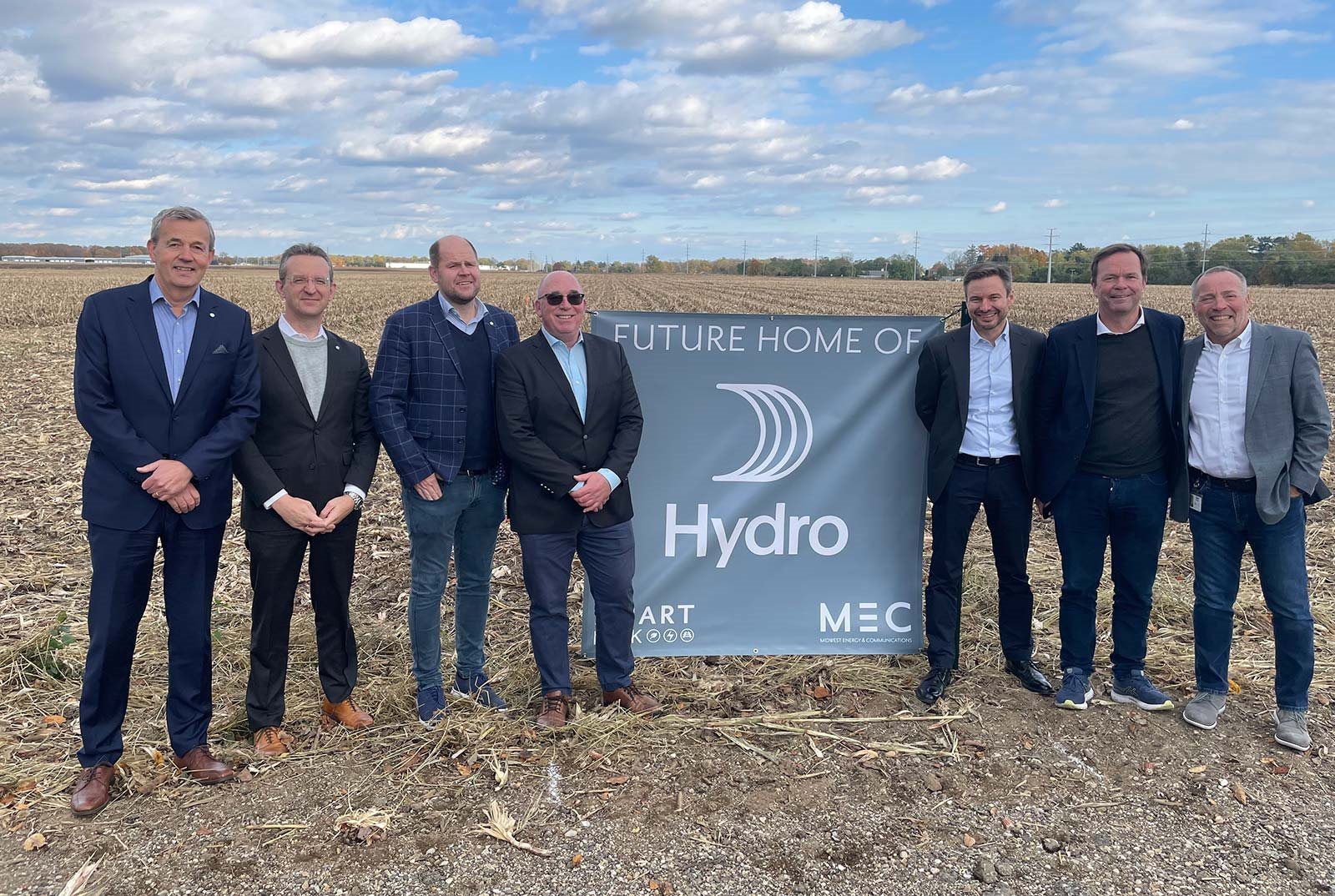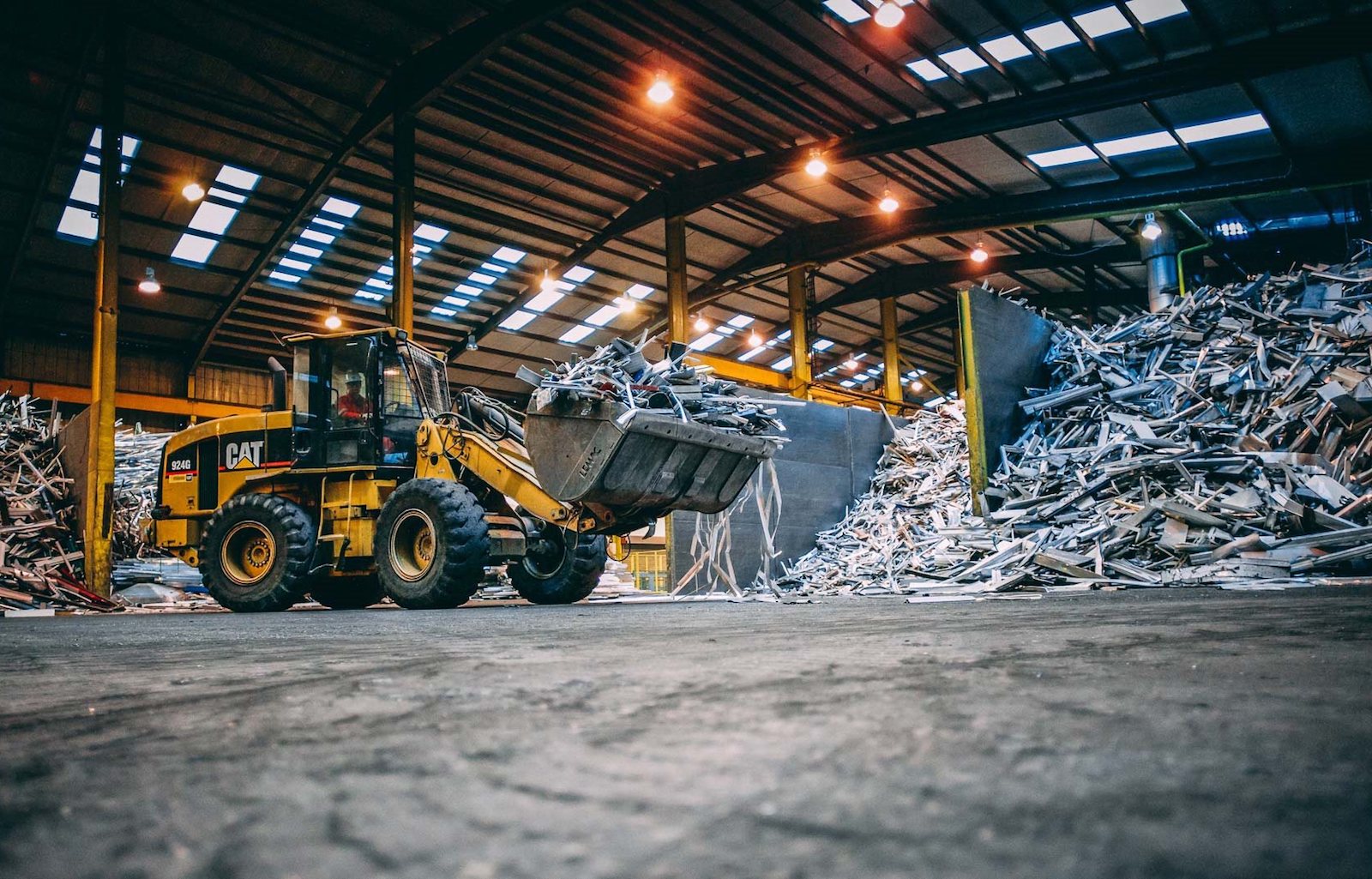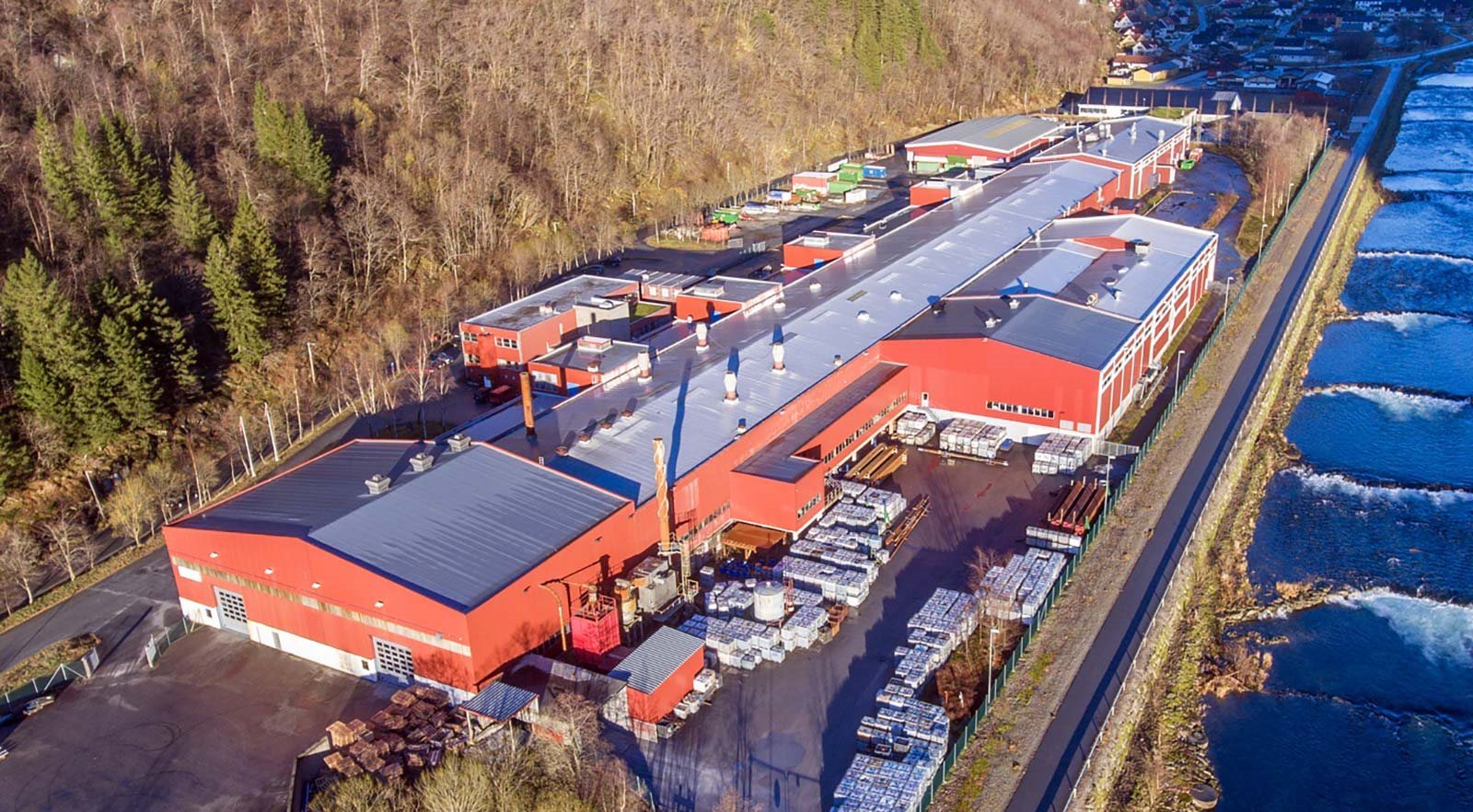Hydro is focused on sustainability, having set ambitious climate, environmental, and social targets — including the goal of achieving net-zero emissions by 2050. Currently, the company is on track to meet this goal, with the expectation of reducing its emissions 10% by 2025 and 30% by 2030 (from a 2018 baseline).
One of Hydro’s main pathways to achieving its sustainability goals is increasing its recycling capacity, particularly in regards to the use of post-consumer aluminum scrap to make low-carbon products. This includes a target of doubling post-consumer aluminum scrap recycling by 2025.
In order to achieve this, the company has been making significant investments to expand its recycling operations around the world. In mid 2021, the company installed a new casting furnace at its plant in Clervaux, Luxembourg, and was in the process of increasing capacity at its Rackwitz recycling plant near Leipzig, Germany. Since then, Hydro has announced four additional investments in recycling capacity across North America and Europe.
Cassopolis, Michigan
Hydro is investing an estimated $140 million in the construction of a state-of-the-art, greenfield aluminum recycling plant in Cassopolis, MI. The new facility will produce 120,000 metric tons of aluminum extrusion ingot per year, serving critical automotive applications and other transportation sectors, consumer applications, and building systems.
“The Cassopolis project represents a key stepping-stone toward Hydro’s goal of doubling recycling of post-consumer scrap in its production processes and providing an EBITDA uplift of NOK 0.7-1.1 billion from the recycling operations by 2025,” said Eivind Kallevik, executive vice president of Hydro Aluminium Metal.

The recycling facility will be the first manufacturing plant located at Midwest Energy and Communications (MEC) Smart Park, a planned industrial and commercial development in Cassopolis. Hydro will utilize direct rail service to bring supplies to the plant, helping to lower the overall carbon footprint of its operations, and plans to partner with MEC to source renewable electrical power for the facility.
In the casthouse, the site will implement an LPC billet casting system from Hycast®, which will be able to produce high quality billet with an excellent surface finish and microstructural uniformity over an extensive alloy range. This will enable the plant to meet the company’s critical goals in opening the new plant. By applying advanced technologies developed at the Hydro recycling plants in Clervaux, Luxembourg, and Azuqueca, Spain, Hydro will be able to recycle up to 40,000 metric tons of post-consumer scrap at the new facility, while delivering high-quality aluminum capable of meeting demanding automotive requirements.
With its increased use of post-consumer scrap, the Cassopolis recycling facility will also allow for the large-scale production of Hydro CIRCAL® extrusion ingot in North America. CIRCAL contains at least 75% post-consumer scrap, as certified by third-party auditors DNV GL, and has a leading CO2 footprint of just 2.3 kg CO2e/kg aluminum.
“The Cassopolis greenfield development will mark the first large-scale production of Hydro CIRCAL® extrusion ingot in North America,” said Kallevik. “We look forward to bringing this high-quality, low-carbon product to our most demanding customers.”
The new plant will employ approximately 70 direct personnel. Hydro’s proposed investment will be supported through grants from the U.S. Economic Development Administration, as well as pending state and local incentives.
Construction of the greenfield recycling plant is set to start in early Q2 2022, with production commencing in 2023.
Deeside, U.K.
Hydro is investing GBP 2.4 million (US$3.29 million) in its recycling plant in Deeside, Wales, U.K. The project will increase the plant’s aluminum recycling capacity to 70,000 tonnes of extrusion ingot per year and expand the site’s use of post-consumer scrap.
“With this investment Hydro Deeside will be able to process and recycle more complex types of post-consumer aluminum,” said Trond Olaf Christophersen, head of Recycling in Hydro Aluminium Metal. “The plant will recycle an additional 70,000 tonnes of aluminum per year which will mainly come from the local scrap market in the region. Once processed, the recycled aluminum will go to customers as Hydro CIRCAL, our brand of recycled aluminum made with a minimum of 75% recycled, post-consumer aluminum scrap.”

The post-consumer aluminum scrap volume processed in Hydro Deeside has been limited by melting furnace capacity. This investment will expand the melting capacity for shredded aluminum scrap, remove the operational bottleneck, reduce raw material costs, and increase the volume of post-consumer scrap recycled at the plant. In addition, the technical upgrades to the aluminum melting furnace at Deeside will result in significantly reduced energy consumption.
“We will now be able to recycle more post-consumer aluminum scrap from our local market, reducing the reliance on import scrap,” said Wayne Clifton, plant manager at Hydro Deeside. “We look forward to delivering even more value-added, low-carbon products to our customers.”
The plant will start production and begin suppling the U.K. market with higher-recycled content billet as of Q1 2023.
Høyanger, Norway
Hydro plans to invest NOK 105 million (US$12.1 million) to establish Høyanger Recycling, a dedicated aluminum recycling facility located adjacent to the Høyanger primary aluminum smelter in western Norway.
“The Høyanger Recycling project will allow us to increase our hybrid aluminum production, where we mix recycled aluminum content into the production of primary aluminum. This method allows us to further reduce our already industry-leading carbon footprint and increase our recycling of post-consumer aluminum,” says Eivind Kallevik, head of Hydro Aluminium Metal. “Another positive aspect about the Høyanger Recycling project is that we will reuse and upgrade existing infrastructure and equipment that already exists in Høyanger. In other words, we are reusing to recycle for the benefit of climate, community, and customers.”

The project will mainly focus on the installation of new production equipment and upgrades to the existing assets and buildings. When fully operational, Høyanger Recycling will have an annual capacity of 33,000 tonnes and around 20 direct employees. The recycled post-consumer aluminum will be divided among Hydro’s Norwegian primary aluminum smelters in Høyanger, Sunndal, Karmøy, Årdal, and Husnes for use in hybrid production.
Hydro’s primary aluminum production in Norway is entirely based on renewable power, its average CO2 emissions are already only 25% of the global average and available to customers as Hydro REDUXA certified low-carbon primary aluminum. The introduction of post-consumer scrap in the production process of primary aluminum further improves its climate performance.
“Hydro is working to double its use of post-consumer aluminum and Høyanger Recycling is a strong contribution to reaching this target,” said Kallevik. “By increasing and developing our hybrid production across the Norwegian smelters, we will be able to offer our most climate-conscious customers an improved alternative in their sustainability efforts.”
Production at Høyanger Recycling is expected to begin in March 2023.
Szekesfehervar, Hungary
Hydro is investing EUR 88 million (US$100.8 million) to construct a new remelt facility at its aluminum extrusion plant in Szekesfehervar, Hungary. The remelt facility will have an annual capacity of 90,000 tonnes.
The Hungarian plant is the largest aluminum extrusion plant in Europe, with six presses and extensive fabrication and surface treatment capabilities. The plant serves many automotive customers, focusing on e-mobility, and the ability to offer closed-loop recycling is increasingly important for car makers, as well as customers from a number of other industries, in reducing their carbon footprint.
The demand for recycled aluminum is increasing and the investment will allow the Hungarian plant to take back production scrap and create closed loops. In a closed loop, production scrap from customers like the automotive tier-one suppliers is collected and sent directly back to the remelt plant. With the recycling process being built near to the extrusion process, one transportation leg is removed and waste is kept to a minimum. The recycled aluminum is able to go right back into the production of advanced car components.
The automotive components that are made in Szekesfehervar include crash management systems, such as bumper beams and crash boxes, as well as many structural parts of the car body, including side sill inserts, side beams, and battery housings and structures. For these complex components, alloy properties are critical and the new casthouse will provide the plant the opportunity to develop and optimize the advanced alloys locally in Hungary, in collaboration with customers.
“We are building a state-of-the art remelt facility using the best available technology and creating more than 70 new jobs in our company,” said Frank Iepema, managing director of the Hungarian operations. “Offering local remelt capacity and minimizing transport are important steps to support, in particular, our automotive customers in their sustainability efforts. With the new remelt facility, we can offer the full range of processes from one location to the benefit of our customers.”
The new remelt facility is expected to start production in Q1 2024.
